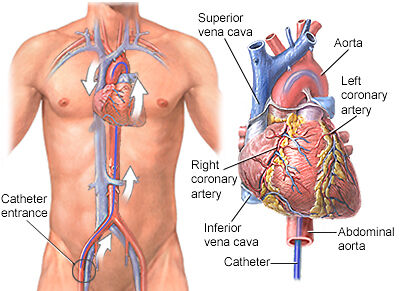
Cardiac catheterization, pronounced “Kath-uh-tur-ih-ZAY-shun,” is a treatment used to detect or treat certain heart diseases such as clogged arteries or irregular heartbeats by guiding a thin, flexible tube (catheter) through a blood vessel to the heart. Doctors can learn vital details about the heart’s blood arteries, heart valves, and muscles through cardiac catheterization.
Doctors can perform a variety of heart tests, provide treatments, or remove a sample of heart tissue for close study during cardiac catheterization. Cardiac catheterization is used during some heart disease therapies, including coronary angioplasty and coronary stenting.
In most cases, you’ll be awake throughout a cardiac catheterization, but you’ll also get some sedatives. Cardiac catheterization has a short recovery period and a low risk of complications.
A frequent procedure used to identify or treat a range of heart conditions is cardiac catheterization. For instance, if you experience arrhythmias (irregular heartbeats), angina (chest discomfort), or cardiac valve issues, your doctor might advise this operation.
Your physician should explain the findings to you if a cardiac catheterization was performed to identify a heart issue.
In order to prevent the need for further catheterization procedures, your doctor may treat any blockages discovered during cardiac catheterization immediately, either with or without the installation of a stent. Before the procedure starts, your doctor should go over whether this is a possibility.

